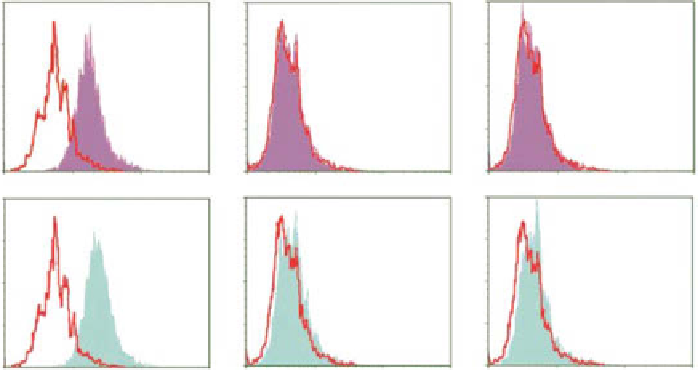Biomedical Engineering Reference
In-Depth Information
4.4
Biomedical applicatioNs oF polymer NaNocapsules
The influence of capsules onto living cells have been studied recently addressing dif-
ferent aspects of interactions with living tissue [66], such as toxicity of capsules,
uptake kinetics and mechanisms, intracellular degradation, as well as strategies to
enhance or block the capsule uptake.
To enable biomedical applications of polymer NCs, it is important to know their
biocompatibility with living cell. NCs representing different scenarios of preparation
and handling can be taken up by human cells (Fig. 4.14) [67]. Among them, NCs with
an outer shell of lipids have the best cell penetration ability. Dried NCs may need
assistance with dispersions in aqueous media, for example, with mild surfactants. All
investigated polymer NCs showed no inhibition of cell proliferation at a dose up to
200 mg/ml or up to 0.2% by volume. At this dose, no generation of reactive oxygen
species (ROS), induction of apoptosis, or perturbation of cell cycle is detected.
(a)
NC1
NC2
NC3
50 μg/ml
50 μg/ml
50 μg/ml
10e0
10e1
10e2
10e3
10e0
10e1
10e2
10e3
10e0
10e1
10e2
10e3
200 μg/ml
200 μg/ml
200 μg/ml
10e0
10e1
10e2
10e3
10e0
Green fluorescence intensity
10e1
10e2
10e3
10e0
10e1
10e2
10e3
(b)
Figure 4.14
Cell uptake of NCs in A549 cell. Cell internalization was measured by flow
cytometry (a) and confocal laser scanning microscopy (CLSm) (excitation at 488 nm) (b). In
CLSm experiments, cell culture medium (a) or NC1 (b), NC2 (c), or NC3 (d) was incubated
with cells for 24 h before measurements. (Adapted with permission from Ref. [67]. © Royal
Society of Chemistry.)


Search WWH ::

Custom Search